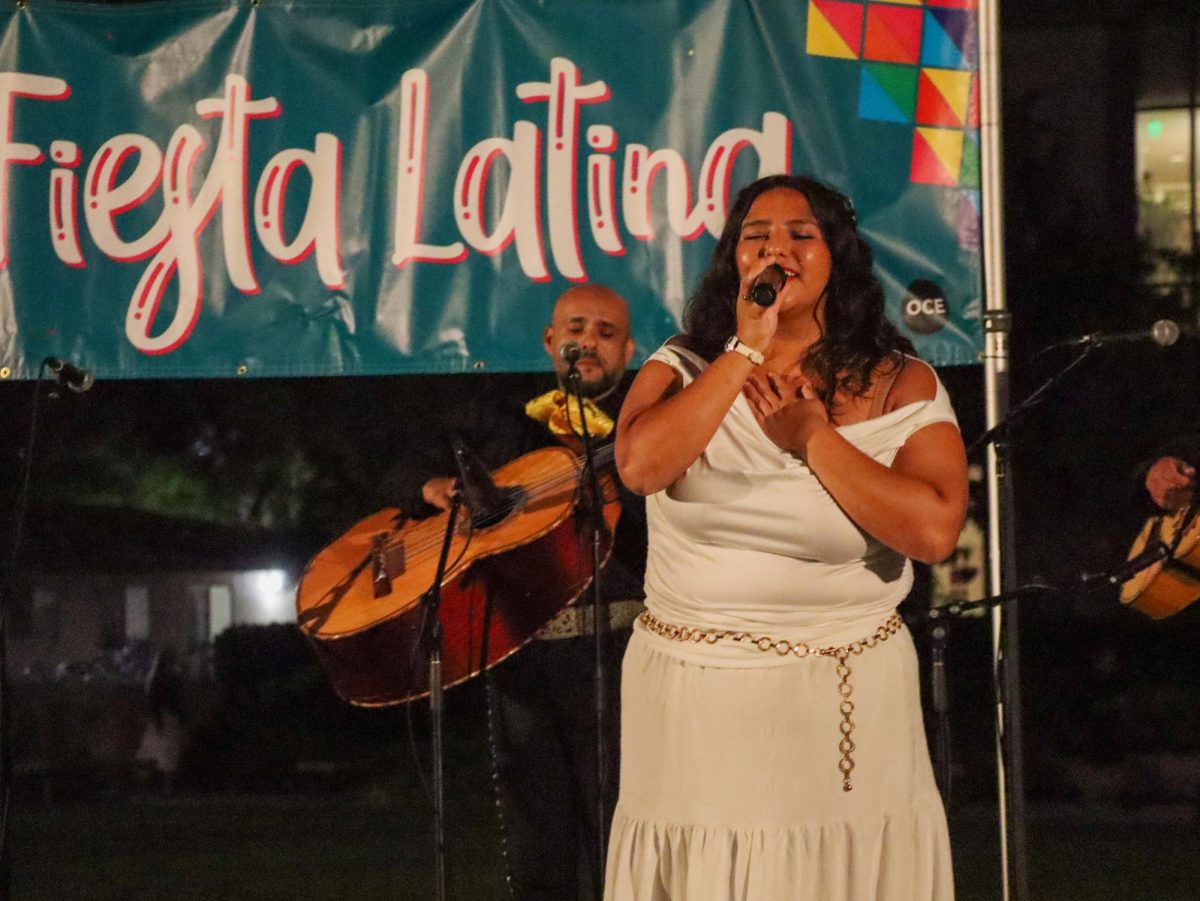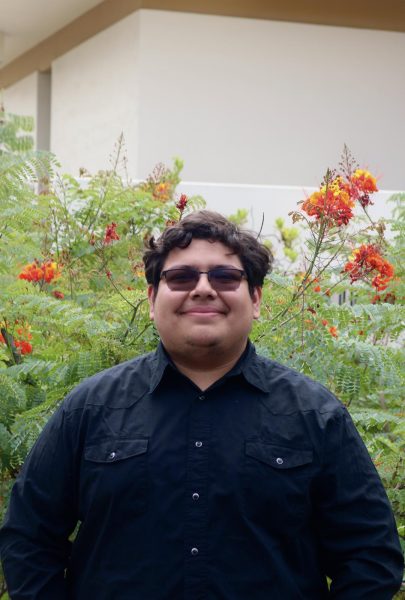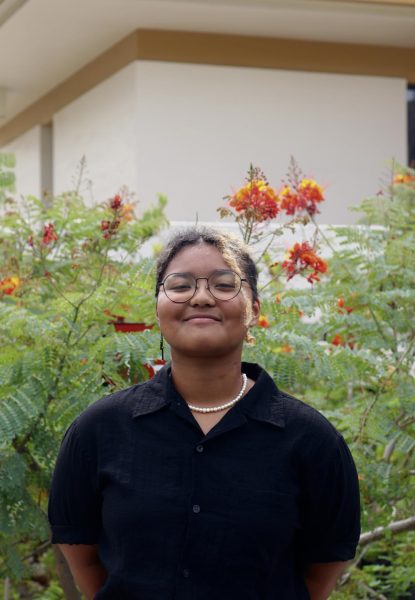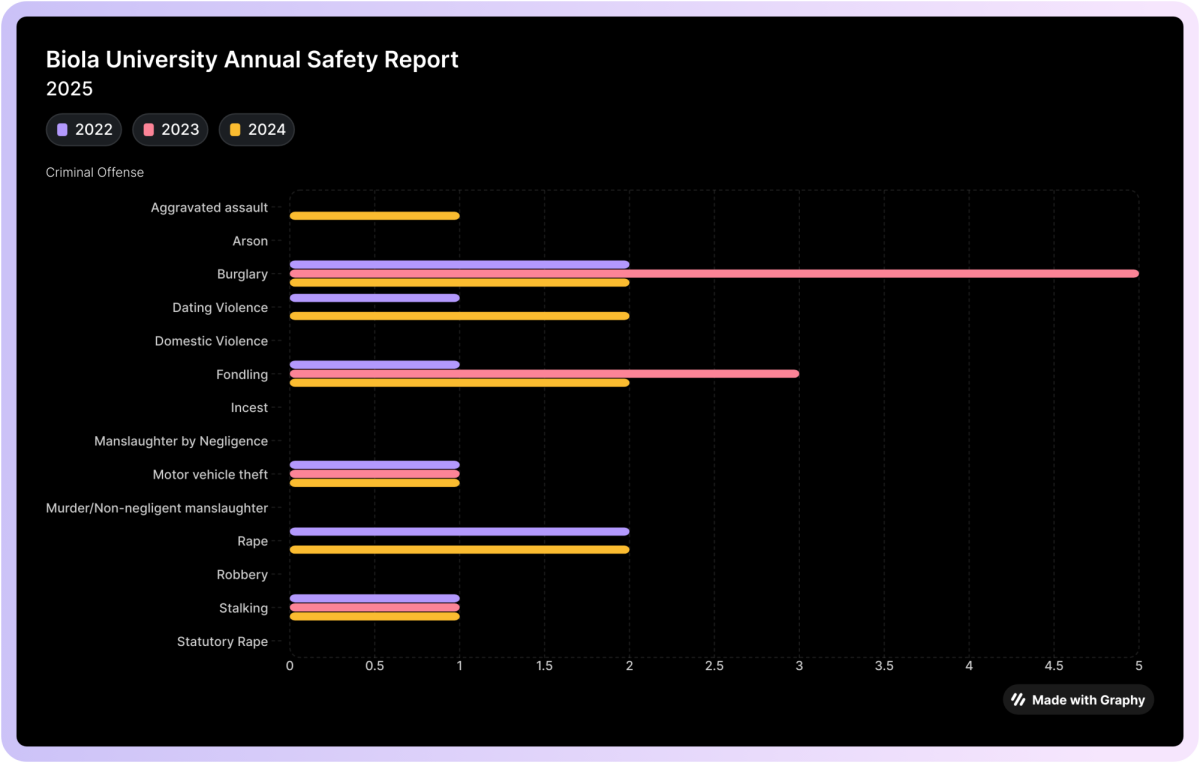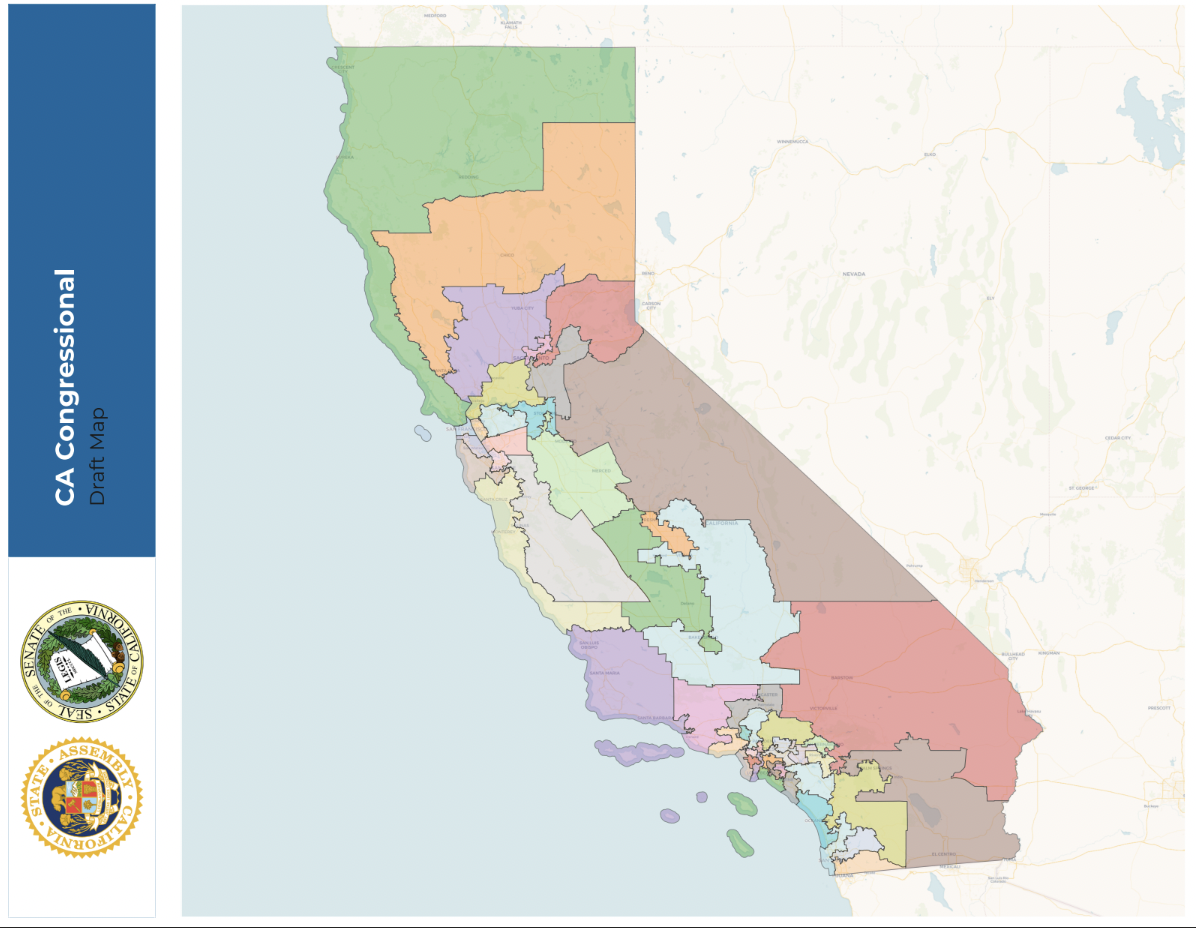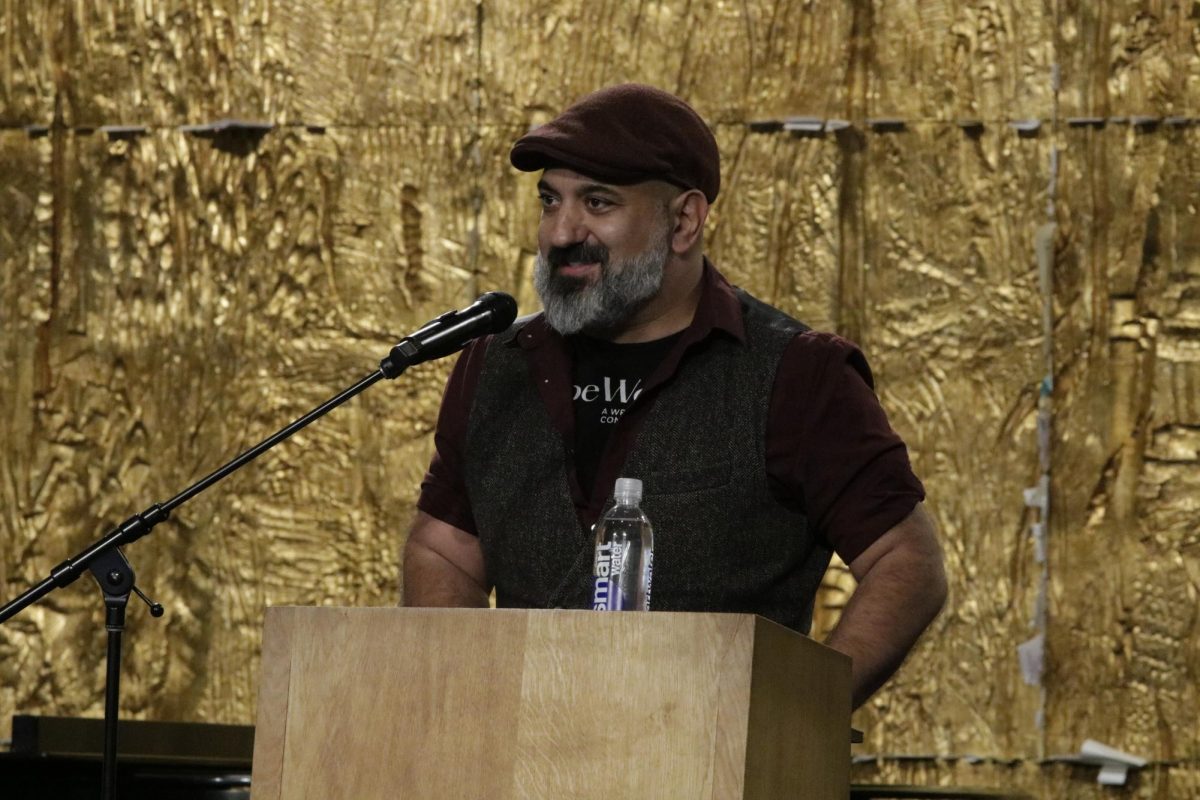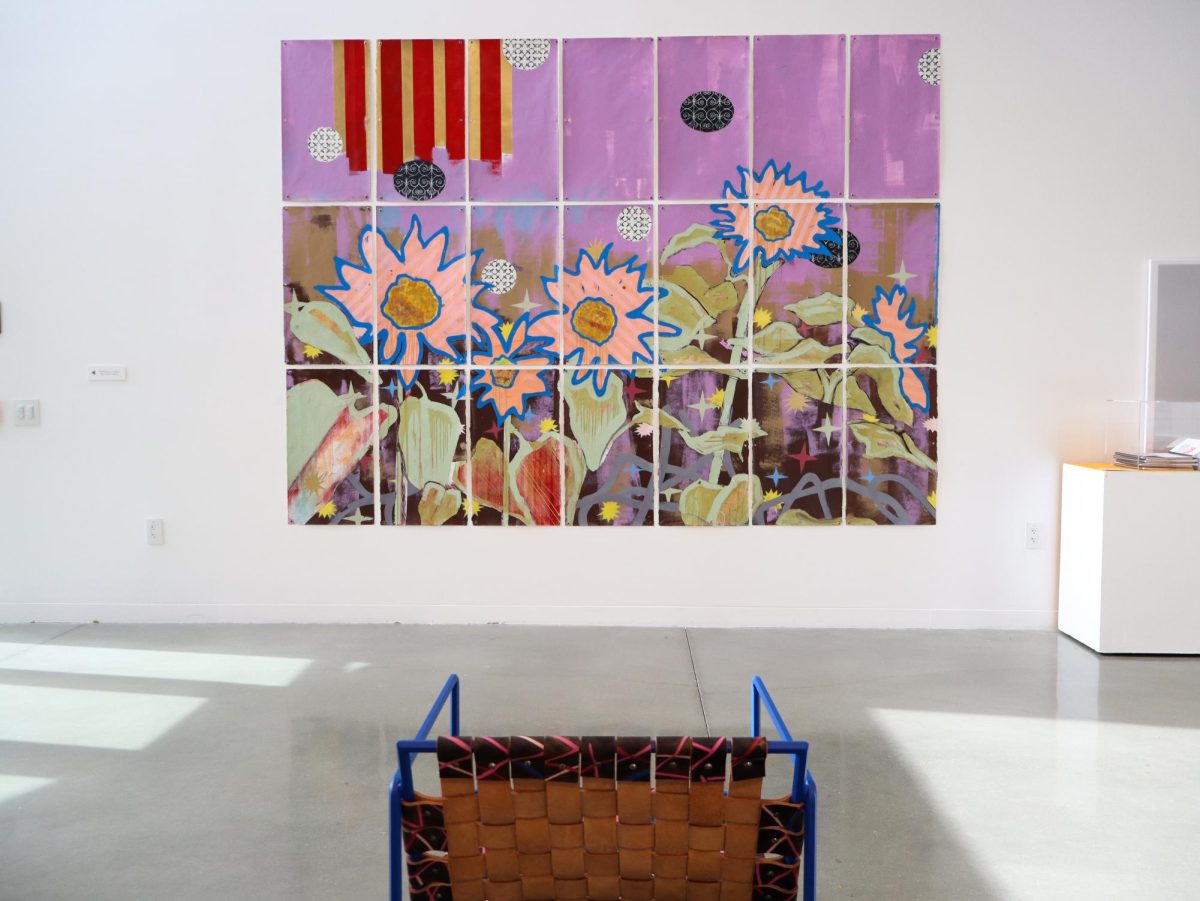On Sep. 25, the music of the mariachi band filled the air surrounding Metzger Lawn as students arrived with event books in hand, ready to experience what Fiesta Latina had to offer for this year’s Hispanic Heritage Month. With colorful booths emitting smells of Hispanic cuisine, fun trivia opportunities, and a live Loteria game, students were able to experience a variety of cultures.
Fiesta Latina is an annual community event celebrating Hispanic culture and identity during Hispanic Heritage Month. This event was planned by Campus Engagement (OCE) and wouldn’t have been possible without the collaboration of various organizations including Global Student Engagement (GSE), Student Government Association (SGA) and Student Enrichment and Intercultural Development (SEID). The hosts for this year’s Fiesta Latina were First Gen Program Intern Christian Sanchez and SEID Marketing Intern Hannah Melgoza.
As the night started, they guided students to the check-in table to pick up their event booklets called passports which offered information on the different cultures that were present that night. Being a new addition to the event, they challenged students to learn more about these countries as the booths offered specialty cuisine, hands-on activities, and a stamp in their passport in exchange for answering a trivia question correctly. This allowed for a more immersive experience for students as they were able to interact with different cultures and leave with a little more knowledge on the traditions of different Latin American countries.
Student Leilani Pasillas volunteered to work the Colombia-themed booth, where the reward offered for the trivia question was a handmade flower that students were able to wear. She felt that the passports increased student engagement.
“Yes, the passports were a great idea! It had everyone engaged at each booth and not just leave after taking the prize,” said Pasillas, “I noticed a lot of people felt good when they got their stamp!”
Although this was her first time volunteering at Fiesta Latina, Pasillas explains her motivation in volunteering this year stems from the liveliness and the ability to express one’s culture.
“I’m not Colombian,” Pasilla said. “But I just love to see the different countries and be able to take part of it and learn from the cultures.”
Another addition to this year’s Fiesta Latina was a community game called Loterìa. Loterìa is a traditional Mexican board game, similar to bingo. However, instead of featuring numbered balls and a numbered board, photos of everyday objects with Mexican-inspired designs and a deck of cards are used to play the game. Director of SEID, Carla Logie, helped curate the game with personalized Loterìa designs that not only call back to the original card game designs but also with a twist of Biola-related objects.
Fiesta Latina was fortunate enough to showcase Mariachi Anacatlan, a mariachi band that has been faithful to Biola for many years at Fiesta Latina and other campus events. They helped set the mood through their knowledge of numerous instruments like the trumpet and guitars. As she introduced them to the stage, Melgoza celebrated the band’s ability in bringing to life the passion of Latin American culture.
Along with the music, Fiesta Latina also welcomed La Granada LA, an LA-based dance studio that specializes in bachata. This form of music and dance originates from the Dominican Republic and combines heartfelt melodies with rhythmic footwork. La Granada LA led students in a dancing lesson, offering another interactive activity to learn from a different culture.
As the event came to a close, students were satisfied with the event and couldn’t wait for next year’s edition.
“This was my favorite Fiesta Latina that I’ve attended!” said Pasillas, “It was so lively! I enjoyed every second!”
Though the music and atmosphere started to fade from Metzger Lawn, Fiesta Latina seemed to have left an impression on many students. Students and workers alike were excited to see how next year’s event will grow from today’s success in not only keeping Hispanic and Latin American culture relevant but in finding new ways to build community through their traditions and meals.

